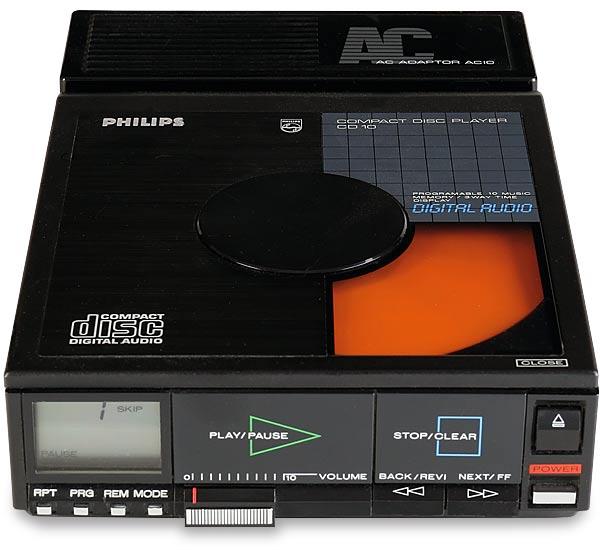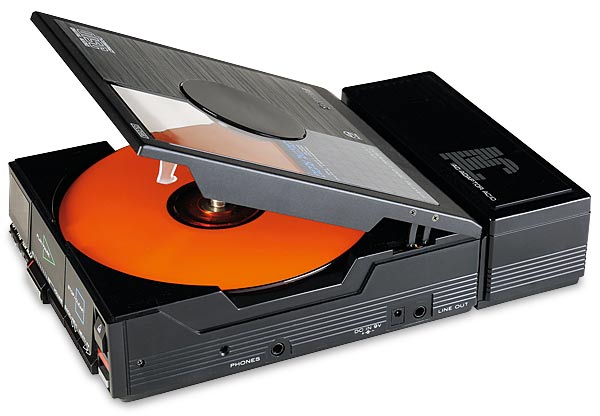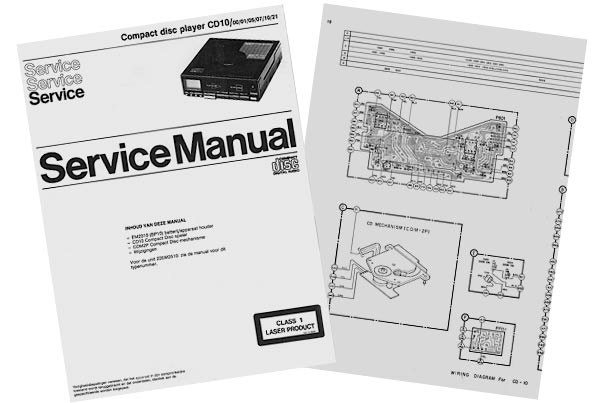Philips CD10 portable

 It was the Dutch company's first ever portable CD player and one of the first players from Philips to use a 16-bit chip. But how does this milestone machine sound today?
It was the Dutch company's first ever portable CD player and one of the first players from Philips to use a 16-bit chip. But how does this milestone machine sound today?
While Philips' dominance of the market for full-sized CD players in the early days of the format has been well documented in these pages, little mention has been made of its activities in the field of CD portables. Despite an obvious flair for innovation and creativity, the company is not especially known for producing miniatures – that crown belongs to the Japanese, and Sony in particular.
Nevertheless, the European market leader in Compact Disc simply had to have a portable player in its range once it had become practicable to produce one. Sony had been the first to market when it released its D-50 [HFN Jan '13] in 1984, Matsushita following fairly promptly with the launch of the Technics SL-XP7 in mid-1985. The Philips machine broke cover at the end of the same year.
Beneath The Badge
Known as the CD10, at a glance it looked to be a mildly restyled Sony D-50. However, there was far more to the player than that. Opening the lid revealed what appeared to be the familiar Philips single-beam, swing-arm laser assembly, indicating that the D10 was an original piece of work rather than a straightforward 'cut-and-paste' job.

Like the flagship CD960 [HFN Jul '20], Philips went to its newly acquired Marantz Japan Incorporated (MJI) subsidiary to have the CD10 designed and manufactured. Previously, all Marantz CD players sold in the UK had been designed and produced by Philips, the bulk of them in the Philips factory in Belgium. The CD10 reversed this situation, being essentially a Marantz machine badged as a Philips. This made it the first true Marantz player available in the UK – a milestone in itself.
Miniature components with the low power consumption requirements necessary for battery portable CD players were very specialised items at the time, so it was inevitable that some sharing of resources would be required, though Philips did produce a special version of its CDM-2 optical unit in its European factories especially for the CD10. Known as the CDM-2P, it was made slightly more compact by shortening the parallel linkage of the focus assembly. This made the laser block marginally smaller so that it could be fitted into a smaller resin chassis. The spindle motor PCB was also re-drafted to save a little more space.
As regular readers will know, all the full-sized Philips players at this point used twin 14-bit DACs and a 4x oversampling digital filter. At a time when the Japanese competition offered a single DAC and analogue filtering only, this gave the Dutch firm a technological lead which wasn't convincingly countered until the end of the decade. The 16-bit version of the Philips 4x oversampling package did not arrive until 1986, being introduced in players such as the CD450 [HFN Aug '14].
One of the things that makes the CD10 remarkable is that it, too, is a 16-bit machine, introduced some months before the more mainstream models. In fact all the CD10's decoding and DAC architecture came from the Sony D-50, culminating in a single 16-bit CX20133 DAC time-shared between the two channels.
Heavy Heart
Since the D-50 did not have a digital filter the CD10 couldn't have one either. Rather, heavy analogue filtering was required at the DAC output to remove the remnants of the 44.1kHz sampling. Although a good solution technically, the fitting of Sony chips had clearly been done with a heavy heart. Part of the CD10's assembly process involved striking out the Sony logos on all the ICs with a black pen to conceal their origin, even though they cannot be seen without first dismantling the machine.

The servo circuits from the D-50 could not be used however. Sony's KSS-110 3-beam laser mounted on its motorised sled had quite different drive requirements to the CDM-2P, meaning that Philips had to miniaturise its unique servo circuits onto a couple of specially designed surface-mount packages. In fact, these were the first devices of this type to be used in a Philips player.
No Mean Feat
In particular, the 650Hz 'wobble', which fractionally vibrates the laser along its path to counteract imbalances elsewhere in the system had to be accurately reproduced in miniature – no mean feat given the overall size, weight and power consumption constraints that were imposed.
Despite the still bulky mechanics and the complex servo, the basic CD10 remained about the same size as three CD cases stacked on top of each other (as in the famous design brief for the D-50). It weighed only 750g and had a modest power requirement of just under 4.5W.
As with the D-50, the CD10's bulk was increased by attaching either an AC adapter (type AC10, seen here) or a battery pack (available as the EM 2310 or in a package with the player as the CD10BP). Perhaps the most compelling CD10 accessory was the EM 2510 which allowed the player to be mounted in the dashboard of a car. This included a 12V power supply along with basic preamplifier facilities and was one of the first really practical ways to enjoy CD sound while behind the wheel.
Up Close
When encountered at first hand it is difficult to avoid thinking that the CD10 is merely a D-50 clone (like the Pioneer PD-C7S). The size and shape of the machine and its power unit are virtually identical, as is the basic layout of the controls. Even the decorative grooves along the cabinet sides are reproduced with uncanny accuracy. Could the two machines really be so different? Closer inspection reveals the Philips to be rather better equipped, having a larger display, repeat and track programming facilities and a neat sliding volume control with its graduations printed on the generously-sized play key.
And there are other differences. The Sony AC adapter includes a pass-through of the D-50's audio output which emerges at the back as two standard RCA sockets. The AC10 unit of the CD10 lacks this refinement, so a 3.5mm stereo jack socket at the side of the machine has to be used for connection to a hi-fi system instead. Nevertheless, the line output connection is properly engineered and bypasses the volume control and the headphone amplifier for optimum sound quality.
On The Move
In use the CD10 feels like any early Philips player, the CDM optics moving leisurely with a series of little squeaks and chirps, always finding their destination eventually. Operation is impressively silent when the desired track is found and the error correction systems are reasonably tolerant of marks on a disc, if not to quite the same extent as a full-size Philips machine.


















































